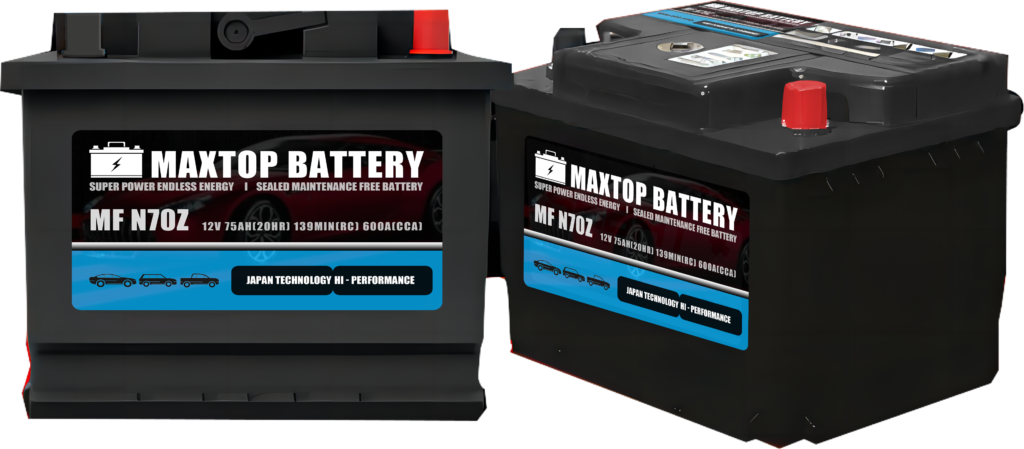
What are the 6 most essential components for a car battery?
Car batteries are one of the most essential components of any vehicle, providing the electrical power necessary to start the engine and run various electrical systems such as headlights. While most drivers are familiar with the basic concept of a car battery, the inner workings of these power sources are less well understood. In this article, we’ll take a closer look at the inner structure of car batteries to help drivers understand how these essential components work.
1. Battery Positive and negative plates:
At the heart of every car battery are the positive and negative plates. These plates are typically made of lead or lead alloy, and they are coated with a paste of lead dioxide or sponge lead. The plates are suspended in an electrolyte solution, typically a mixture of sulfuric acid and distilled water, which allows a chemical reaction to take place between lead and lead dioxide. This chemical reaction produces an electrical charge that is stored in the battery and can be used to power your car’s various electrical systems.
2. Battery Grids for Plates:
The plates are supported by a series of grids, which act as the backbone of the battery. These grids are typically made of lead or lead alloy, and they are designed to withstand the chemical reactions that take place within the battery over time. The grids are also designed to provide a large surface area for the plates to attach to, allowing for maximum conductivity and electrical flow. The grids must be strong and durable enough to withstand the constant expansion and contraction of the plates as the battery charges and discharges.
To ensure optimal performance, the grids and plates of a car battery must be carefully formed and stamped using advanced manufacturing techniques. At MAXTOP, for example, we use optimized forming and stamping technology to improve the performance of our battery grids, resulting in batteries that are more conductive, durable, and long-lasting.

3. Battery Separators between Positive and negative plates:
In addition to the grids and plates, a car battery also contains a series of separators, a kind of insulating material that helps to keep the positive and negative plates apart while still allowing the electrolyte solution to flow freely between them. These separators are typically made of porous material, plastic separator material that is chemically resistant and able to withstand the corrosive effects of the battery’s electrolyte., such as fiberglass or polyethylene, that allows the electrolyte to flow freely between the plates, and they play an important role in ensuring that the battery can maintain a steady charge over time.
4. Battery Plate Straps:
Plate straps are an essential component of car batteries that play a crucial role in ensuring the battery’s optimal performance. The plate strap is a piece of lead that connects each cell in the battery together in a series, allowing for the flow of current through the battery cells from the positive to the negative. This connection is crucial for achieving the total voltage required for the battery to power a car’s electrical systems.
The quality of the plate strap can have a significant impact on the battery’s overall conductivity and durability. Poor-quality plate straps can result in a weak connection between cells, leading to reduced battery performance and a shorter lifespan.
Manufacturers of high-quality car batteries prioritize the use of optimized plate strap technology to improve the performance and durability of their batteries. Welding the plate straps together through the plastic wall of the battery ensures a secure and strong connection between cells, allowing for maximum conductivity and longevity.
In conclusion, plate straps are an essential component of car batteries, and their quality plays a significant role in the battery’s overall performance and lifespan. It is crucial to choose a car battery from a reputable manufacturer that prioritizes the use of optimized plate strap technology to ensure optimal battery performance and longevity.
5. Battery Case:
The battery case is the outer covering of the battery that protects the internal components of the battery, such as the electrolyte and the cells. The case is usually made of polypropylene (PP), as these materials are lightweight, durable, and can resist the vibrations and shocks that a car battery is exposed to during normal use. The battery case also serves to contain any spills or leaks that may occur inside the battery, protecting the environment and preventing damage to the vehicle or other equipment. Overall, the battery case is an important component of a car battery’s inner structure and must be designed and constructed to withstand the harsh conditions of automotive use.
MAXTOP batteries case consists of a reflux-design cover and reinforced body case, the unique mazy reflux design of the cell cover ensures that electrolytes can flow back to the battery inside, which can lower water wastage and extend battery life. The case and cover are both adopted with reinforced design to achieve higher strength.
6. Battery Terminals:
Battery terminals are critical components of a car battery’s inner structure that connect the battery to the vehicle’s electrical system. The positive terminal is marked with a plus sign (+), while the negative terminal is marked with a minus sign (-). Battery terminals are typically made of lead or another highly conductive material that can withstand high electrical currents.
The material used for battery terminals is crucial for maintaining a stable and consistent connection between the battery and the vehicle’s electrical system. Lead, which is commonly used in battery terminals, has a low resistance, making it an excellent conductor of electricity. The use of high-quality materials in the manufacture of battery terminals ensures that the terminals can handle the high current demands of modern vehicles and withstand the corrosive effects of battery acid. As such, it is essential to choose a reputable brand when purchasing a replacement battery for your vehicle to ensure that the terminals are made of high-quality materials and will provide reliable performance over time.
Car batteries are complex devices that rely on a variety of different components working together to produce the electrical power necessary to start a vehicle and run its various electrical systems. By understanding the inner structure of car batteries, drivers can better appreciate the importance of maintaining their batteries and ensuring that they are in good working order. Of course, there are a wide variety of different types of batteries available on the market today, from traditional lead-acid batteries to more advanced options like lithium-ion batteries. Each type of battery has its own unique set of strengths and weaknesses, and choosing the right battery for your vehicle depends on several factors, including the make and engine of your car, the way you drive, the average temperature of the place you drive, etc…

Ultimately, the inner structure of a car battery is a complex and fascinating topic, one that is essential to understanding the proper maintenance and care of your vehicle. Whether you’re a seasoned car enthusiast or simply someone who wants to ensure that your car is running smoothly and efficiently, taking the time to learn about the inner workings of your car’s battery can be a valuable investment in your automotive knowledge and expertise. It is important to note that different car batteries have different designs, and the internal structure may vary depending on the specific type of battery. However, the basic components of a car battery are generally the same. By understanding the inner workings of car batteries, you can better appreciate how they function and how to properly care for them.
In conclusion, the inner structure of a car battery is a complex and intricate system of components that work together to produce the electrical energy that powers your vehicle. From the lead plates and electrolyte solution to the separators and terminals, every element plays a vital role in the battery’s overall performance. It is essential to understand the importance of proper maintenance and handling to ensure that your car battery lasts as long as possible. With regular checks, proper charging, and storage, you can keep your car battery in top shape and avoid any unpleasant surprises on the road.

